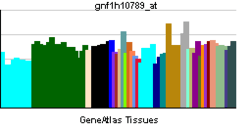KIRREL2
| KIRREL2 | |||||||||||||||||
|---|---|---|---|---|---|---|---|---|---|---|---|---|---|---|---|---|---|
| Identifiers | |||||||||||||||||
| Aliases | KIRREL2, FILTRIN, NEPH3, NLG1, kin of IRRE like 2 (Drosophila) | ||||||||||||||||
| External IDs | MGI: 2442334 HomoloGene: 35249 GeneCards: KIRREL2 | ||||||||||||||||
| |||||||||||||||||
| RNA expression pattern | |||||||||||||||||
 | |||||||||||||||||
| More reference expression data | |||||||||||||||||
| Orthologs | |||||||||||||||||
| Species | Human | Mouse | |||||||||||||||
| Entrez | |||||||||||||||||
| Ensembl | |||||||||||||||||
| UniProt | |||||||||||||||||
| RefSeq (mRNA) | |||||||||||||||||
| RefSeq (protein) | |||||||||||||||||
| Location (UCSC) | Chr 19: 35.86 – 35.87 Mb | Chr 7: 30.45 – 30.46 Mb | |||||||||||||||
| PubMed search | [1] | [2] | |||||||||||||||
| Wikidata | |||||||||||||||||
| View/Edit Human | View/Edit Mouse |
Kin of IRRE-like protein 2, also known as NEPH3, is a protein that in humans is encoded by the KIRREL2 gene.[3][4][5] It is primarily expressed in β cells of the pancreatic islets.[3]
KIRREL2 is a member of the NEPH protein family, which includes NEPH1 (KIRREL) and NEPH2 (KIRREL3). NEPH proteins bind the
References
- ↑ "Human PubMed Reference:".
- ↑ "Mouse PubMed Reference:".
- 1 2 Sun C, Kilburn D, Lukashin A, Crowell T, Gardner H, Brundiers R, Diefenbach B, Carulli JP (Jul 2003). "Kirrel2, a novel immunoglobulin superfamily gene expressed primarily in beta cells of the pancreatic islets". Genomics. 82 (2): 130–42. doi:10.1016/S0888-7543(03)00110-1. PMID 12837264.
- ↑ Ihalmo P, Palmen T, Ahola H, Valtonen E, Holthofer H (Dec 2002). "Filtrin is a novel member of nephrin-like proteins". Biochem Biophys Res Commun. 300 (2): 364–70. doi:10.1016/S0006-291X(02)02854-1. PMID 12504092.
- ↑ "Entrez Gene: KIRREL2 kin of IRRE like 2 (Drosophila)".
Further reading
- Bonaldo MF, Lennon G, Soares MB (1997). "Normalization and subtraction: two approaches to facilitate gene discovery.". Genome Res. 6 (9): 791–806. doi:10.1101/gr.6.9.791. PMID 8889548.
- Wiemann S, Weil B, Wellenreuther R, et al. (2001). "Toward a catalog of human genes and proteins: sequencing and analysis of 500 novel complete protein coding human cDNAs.". Genome Res. 11 (3): 422–35. doi:10.1101/gr.GR1547R. PMC 311072
 . PMID 11230166.
. PMID 11230166. - Strausberg RL, Feingold EA, Grouse LH, et al. (2003). "Generation and initial analysis of more than 15,000 full-length human and mouse cDNA sequences.". Proc. Natl. Acad. Sci. U.S.A. 99 (26): 16899–903. doi:10.1073/pnas.242603899. PMC 139241
 . PMID 12477932.
. PMID 12477932. - Clark HF, Gurney AL, Abaya E, et al. (2003). "The secreted protein discovery initiative (SPDI), a large-scale effort to identify novel human secreted and transmembrane proteins: a bioinformatics assessment.". Genome Res. 13 (10): 2265–70. doi:10.1101/gr.1293003. PMC 403697
 . PMID 12975309.
. PMID 12975309. - Zhang Z, Henzel WJ (2005). "Signal peptide prediction based on analysis of experimentally verified cleavage sites.". Protein Sci. 13 (10): 2819–24. doi:10.1110/ps.04682504. PMC 2286551
 . PMID 15340161.
. PMID 15340161. - Gerhard DS, Wagner L, Feingold EA, et al. (2004). "The status, quality, and expansion of the NIH full-length cDNA project: the Mammalian Gene Collection (MGC).". Genome Res. 14 (10B): 2121–7. doi:10.1101/gr.2596504. PMC 528928
 . PMID 15489334.
. PMID 15489334. - Rinta-Valkama J, Aaltonen P, Lassila M, et al. (2007). "Densin and filtrin in the pancreas and in the kidney, targets for humoral autoimmunity in patients with type 1 diabetes.". Diabetes Metab. Res. Rev. 23 (2): 119–26. doi:10.1002/dmrr.655. PMID 16741999.
This article is issued from Wikipedia - version of the 6/1/2016. The text is available under the Creative Commons Attribution/Share Alike but additional terms may apply for the media files.